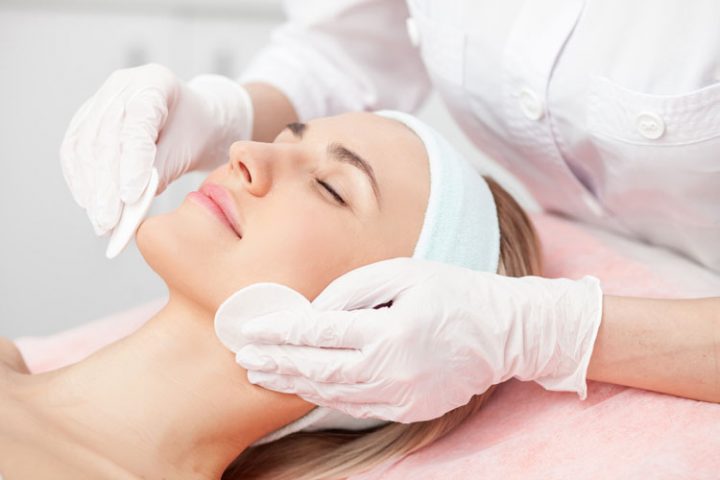
Chemical peels are a popular and valid form of skin therapy. Chemical peels can be light and superficial performed by your skin therapist or deep and capable of causing dermal skin wounds. These peels must only be performed under expert medical supervision. Light superficial peels can be performed by a qualified clinician and generally involve the use of alpha hydroxyl acids (AHA’s) such as lactic, and glycolic acids and beta hydroxyl acid (BHA’s) such as salicylic acid. Peels can vary in strength from 20% AHA up to 60% AHA for more tolerant skin types. Always be guided by your skin therapist as to the best course of treatment for your skin type concern.
1. What are the best ingredients for peels?
In terms of AHA’s, I prefer to formulate with lactic acid over glycolic. This is because lactic acid is a larger molecule than glycolic acid. Lactic is less likely to penetrate the epidermis and cause skin irritation. In addition, lactic acid is a natural skin hydrator and is less likely to cause surface dryness. Salicylic acid is a great peels agent due to its ability to penetrate the pore and reduce inflammation. Even clients with sensitive skin will benefit from low level salicylic acid peels (5% or less).
2. Who are the best candidates for peels?
Generally those who suffer from acne, congestion, blackheads, sun damage and fine lines will benefit from peels. In terms of acne, the lactic acid removes the top layer and salicylic acid (BHA) penetrates the follicles to help unblock pores, reduce inflamed skin and remove trapped oil and dead cells. For those suffering from surface pigmentation and sunspots, AHA’s help to lift surface cells which hold the uneven surface pigmentation. Clients with fine lines will find that a series of AHA peels will note a reduction in the appearance of fine surface lines, as exfoliation causes the skin to regenerate new cells more efficiently and remove rough surface cells.
3. Is one peel enough?
Unless one strong deeper peel is performed under controlled medical supervision the answer is no. Best results will be obtained through a series of six to eight fortnightly to monthly peels rather than a one-off treatment. It is recommended to have lighter peels over three months than one aggressive peels that may cause severe damage to the skin. Many clients commence with low level peels (lactic 20-30%) and gradually increase the peels strength over the series to up to 60% if tolerated. Your skin therapist will advise you on a suitable level for your skin type.
4. Can anyone have a peel?
Not everyone is suited to chemical peels. Peels should never be performed on those with darker skin tones, particularly those with darker Asian, Middle Eastern and African American and Southern European ethnicity as they are prone to skin pigmentation after damage.
5. Can the skin be over peeled?
Have you ever noticed older skin that has the appearance of candle wax? This may be the result of over peeling. Having too many peels of overly aggressive treatments can irreversibly thin the skin and may even permanently remove our natural protective pigment. Always err on the side of caution and have peels performed by reputable therapists. Peels are designed to address a skin concern. Once the concern is controlled or desired results are achieved, then the treatment should cease. Maintenance treatment can be performed as needed.
6. What about exfoliation at home?
In my opinion, your daily home regimen that you perform seven days a week has more impact that what can be achieved with occasional clinical treatments. It is possible to achieve excellent results in improving skin tone and texture with high-quality home exfoliation ingredients. Low level lactic, salicylic, malic, and mandelic acid in serum form can be used daily for acne and sun damage and up to three times per week for general skin exfoliation. The Synergie Skin product, ReVeal, is designed to gently remove surface dead cells and remove trapped oil and dead cells trapped in pores.
Clinical Peels are an important element of skin care. However, peels are not a ‘one size fits all’ treatment. Peels come in many strengths and forms and you must always seek the advice of a qualified skin professional before embarking on a series of chemical peels.
Not sure what products are suitable for your skin type? Head to our Analyse Your Skin quiz to find your routine – your skin confidence begins here.
